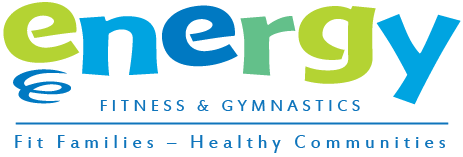Energy’s Xcel Team
Ages: 4 - 17 Years Old
*These programs are available by recommendation only.
The USA Gymnastics Xcel program was developed as an alternative competitive program offering individual flexibility to coaches and gymnasts. The goal of Xcel is to provide gymnasts of varying abilities and commitment levels the opportunity for a rewarding gymnastics experience.
The focus of the Xcel program is sportsmanship, leadership, teamwork, and fun. The emphasis in the Xcel program is on correct technique, form, and performance.
This program is for those who are the more dedicated students and desire more time in the gym to elevate the skill level & seriousness in the gym, performance opportunities, member benefits, and future development and opportunity at Energy.
Frequently Asked Questions
-
We recommend scheduling an evaluation by submitting an Evaluation Form.
-
USAG (USA Gymnastics) is comprised of two different competitive Programs: J.O. (Junior Olympic) and Xcel.
USAG judges serve both programs. Traditionally, USAG has operated exclusively through J.O. with Levels 1-10. The J.O. program requires more time and a high level of dedication. At the more advanced levels, the commitment can extend to the whole family due to extensive travel required for training and competition.
Gym hours vary depending on the club, but typically J.O. Program hours typically begin anywhere between 6 to 12 hours a week at the lowest level and may go up to 25 hours a week at the highest levels.
A solution needed to be found for those athletes who wish to remain competitive but want to explore different activities or have the opportunity to just be a kid as well. Also keep in mind that gymnastics is a year-round sport. The outcome would be a program that could be balanced along with other activities. And so Xcel was created.
Xcel programs begin training at least two to four hours a week at the lowest level, going up to 12 to 16 hours a week at the highest level.
Xcel has since become the majority of registered athletes competing through USAG all over the country.
-
Being on a Competitive Gymnastics Team is a year-round commitment. Gymnastics is seasonal recreationally.
Achieving a high-level gymnastic performance is based on mastering the building blocks that go into each skill set. This takes a long time and ideally shouldn’t be interrupted or the flow of learning will be compromised.
Although competitive gymnasts may compete for just one part of the year, the rest of the year is spent training and preparing for the next level of competition. Constant improvement and reinforcement are critical to attaining mastery of top-level skills. While small breaks aren’t necessarily negative, a seasonal break from the sport could make it very difficult to return and resume meaningful progress on the next set of skills.
-
Energy promotes nurture and empowerment as key in supporting children in becoming the best they can be physically, mentally, emotionally, and socially.
We use gymnastics as a medium for physical fitness and strive to create an environment where children are shown respect and feel safe, are challenged, and develop ownership of physical skills.
Classes are structured, but not rigid, so that children can channel their energy in an optimal environment.
This approach is empowering and allows children to explore beyond their comfort level, resulting in an outstanding, confident, and self-assured young person.
-
Energy Fitness & Gymnastics classes are based on a 15-level syllabus and over 2000 developmental skill progressions, which instructors use to develop their class structure, evaluate children, and create a fun, safe, and challenging physical environment.
Each level challenges students progressively, introducing more difficult skills as the child advances through each level.
By breaking down the development of gymnastic skills into these levels, we have created one of the most comprehensive, challenging, and fun program designs in the country.
-
Ready for Gymnastics
Leotard or Comfortable Tight Fitting Clothing
Ponytail
Barefoot (no socks)
No jewelry
Hair
It is essential that gymnasts’ with long hair pull their hair back. They can wear their hair in a ponytail, bun, braid, or any hairstyle where it isn’t going to get in the way.
When long hair is worn down it can get in the gymnasts’ face or caught by the gymnasts’ hands or feet when performing skills.
Feet
The majority of gymnasts both practice and compete with bare feet. Socks can create a safety hazard as they are often slippery on the apparatus. It can also prevent the gymnast from using their toes to push, climb, and learn how to grip apparatuses with their toes when performing skills.
While we do not recommend this, sometimes families opt to wear non-slip socks. Because non-slip socks aren’t all made the same, it still can create a safety hazard as socks are prone to move around due to a number of factors: fit size, amount of grip surface, socks elasticity, etc.
Attire
Gymnasts’ can choose to wear Leotards, Comfortable Tight Fitting Clothes such as T-Shirt, Tanks, Shorts, Leggings, etc.
Most gymnasts choose to wear a leotard to work out in as it allows the gymnast to move easily. However, this is not required.
Shorts
Many gymnasts feel more comfortable practicing with shorts over their leotard. It is recommended that gymnasts wear tight fitting shorts in order to prevent from being caught on equipment.
Loose Fitting Clothing
Loose fitting clothing can present a safety hazard as it can get caught by the gymnasts’ hands, feet, or an apparatus when performing different exercises/skills.
Jewelry
Often gymnasts want to wear jewelry at practice. However, watches, bracelets, necklaces, rings, and earrings (other than studs) all present a safety hazard as they could get caught on the equipment.

